Sicily is Amazing
- Janet STRAYER

- Dec 23, 2022
- 17 min read
Updated: May 21
Why Sicily is Amazing
Sicily is amazing. It is an island filled with intensity and dramatic contrasts. So much so that we've returned several times for extended stays. On our current adventure, we're living in a cave, an experience I'll describe later.
Sicily has always beckoned foreigners. D.H. Lawrence lived here for some years and Lawrence Durrell wrote of it. Yet "la dolce vita" doesn't apply to this mass of stone kicked by the boot tip of Italy. Salt and sulphur mines, quarries, deforestation, active volcanoes, historic strife, and a history of absentee landlords have left their harsh mark.
Sicily is compelling located at the crossroads of Euro-North African-Mid Eastern cultures: a land filled with myth and remnants of the ancient Greeks, Phoenicians, Romans, Muslims, Normans, Spanish, Swabians, and French who lived on this small island. With its own dialects, history, and allegiances, set apart from the rest of Italy both physically and culturally. Sicily is a land of contrasts. It offers much to see, but seems a hard place to get to know. Something surprising always awaits as you travel here.

Trinacria, photo above, Symbol of Sicily (read more about it)
Mount Etna Lives
Mt. Etna is very much a live volcano. Topped with eternal snow, Etna still fumes with earth's inner fire. A few years back, we hired a jeep and guide to take us to the summit. We walked on the hot earth and saw red veins flowing underfoot. You could feel the warm ground shifting under your feet and smell the acrid sulphur from the mythical forges of Hephaestus.
Etna dominates Sicily's eastern landscape, is Europe’s largest volcano, and one of the world’s most active. Dramatic jets of lava have been recorded spewing vertically into the air in recent years. Yet, it remains an active visitor destination where you can tempt fate and still hike (with guide) along steaming craters to the summit

The Renaissance in Sicily

Although northern Italy has tended to snub Sicilian culture, the Renaissance master artist. Antonello da Messina is a famous local boy who made his mark in art history. Some of his works, like the Madonna of the Salts (shown) seem to me strikingly modern in their modelled plasticity, emphatically simplified masses, dramatically high contrast, and super-defined "realism.".
Even earlier treasures of high-culture abound near Palermo in its striking cathedrals (from 12th C) that combine Norman, Byzantine, and Saracen with Italian styles. (
Palermo
Palermo is a high-octane, multi-ethnic city where chic high-fashion contends with street stalls, and luxurious Baroque architecture vies with some mean streets. A few selected sights follow.
Porto Nuovo (Palermo)

To give you a wink of an idea of just how old Palermo is, this photo shows the "new" door to the city -- built in the 1500's. I think the moustached Moorish faces depicted are particularly interesting and different from those carved in northern areas of Europe at similar times. I'm sure they hold many told and untold stories.
Palazzo Reale: Capella Palatina (Palermo)
The Palazzo Reale (12th C) with its extraordinary Cappella Palatina (chapel of the kings of Sicily under Norman rule) is unlike anything I'd seen before. It's a perfect gem of Norman and Moorish-influenced Byzantine architecture. The ceiling is reputed to be the only one in the world of this style: "stalactites" carved in wood. The designs and images throughout are wonderful examples of glittering golden mosaic artistry and narrative depiction. Only a great many photos could even hint at it the experience of walking through this great site. Inside, i it is like being encased in marvels everywhere you look. How anyone could ever draw one's eyes away from all there is to see and pay attention to a sermon here (or in Monreale, below) is beyond me.
Teatro Maximo (Palermo)

Back to secular reality, here's a sturdy structure: the Teatro Massimo. It's the largest theatre in Italy and one of the largest in the world. An inscription on its facade says that art both renews and reveals a people. This was the setting for the final scenes of Godfather III. Wanna make something of that!
I passed the Teatro in the midst of heavy city traffic. You don't linger in Sicilian traffice. But, if you walk to the building, horse-drawn carriages wait nearby imagining another era.
The interior is very large and plush. I didn't get to see a performance, but it was easy sit there and imagine theatre filled with gentry listening to Cavaleria Rusticana, that perfectly scored, intense little opera of 19th C rural Sicilian life. I can envision the elegant Prince Lampedusa in one of the theatre boxes. The Prince is a major character in The Leopard, a gripping historical novel, by a related G.T. Lampedusa. It chronicles changes in Sicilian society during Italy's Risorgimiento, a fight for Italy's revival via unification.
The Politeama (Palermo)

Nearby is the Politeama, a welcome sight when lost in this city. Seeing the horses on its roof helps orient you. The roof scene is symbolic of Garibaldi (one of the good guys in a violent history), who landed with his brigade in Sicily as the first stop on their trek for Italy's Risorgimiento. It has remained quite a challenge to govern Italy as a unified country ever since.
Monreale
Just outside the city and part of greater-Palermo, is Monreale. It is another magnificent site in an island filled with exceptional treasures. Monreale's 12C Duomo is impressive outside and splendid inside, with gold encrusted mosaics very gracefully depicting biblical scenes. The old testament narrative is depicted on the upper level, and the new testament on the lower level. It's more than glitter, and the decorative architecture tends to appear to the viewer on all sides. Similar in style to the older Capella Palatina (Palazzo Reale), the mosaics seem to me even finer here.
Moving from the sublime to the ridiculous, let me tell you a true tale of what happened to us in Monreale.
Driving and Losing Your Car in Sicily
Driving in Sicily is a dangerous sport for the un-initiated. Many roads are less than finished, some even go nowhere, and the basic "rules of the road" turn totally anarchic. The main custom seems to be "whoever gets there first has the right of way", even if this means someone will dangerously cutting in front of you. Demarcated lines on the road mean very little when a Sicilian car wants to pass yours, and passing in dangerous situations seems to be a national sport. Yet the same drivers, out of their cars, have been genuinely nice to us.
After searching all around Monreale for an almost nonexistent parking spot, we finally found one. We then entered and became engrossed in the beauty of the Duomo. After some hours of filling our senses and strolling around the piazza, we went back to the car. NO car! Couldn't find it anywhere. Stolen? We knew that could happen. We noticed a street sign saying this was a restricted parking zone (something we hadn't noticed before). A local cabdriver told us our car must have been towed and that we'd have to pay a ransom to get it back. He motioned to the local police and told us to follow it up with them. The police were polite but dismissive: "No, we don't tow cars from here", they said, "it must have been stolen." Great. Our rented car, stolen.
While reeling from this news, I remembered having taken a photo of the Duomo just after getting out of our parked the car. I looked at the photo, and it showed a very different view from the present one. Aha! I showed my photo to the police. The police recognized that particular view of the Duomo, and obligingly escorted us to a different street... and there was our car! We joked together about our common interest in the skills of the famous Sicilian fictional detective, Inspector Montalbano.
Anonymous Art and Outsider Art
Much of the art I see across my travels has led me to muse about how many truly wonderful artists remain anonymous. Which contemporary artist would forsake their possible 15 minutes of personal fame for the timeless endurance of an anonymous artwork? Made for its own sake, or perhaps aligned to a transcendent or spiritual purpose, so many wonderful art creations throughout history to present times, have been made by anonymous hands.

Wandering the cloister at Monreale, for instance, I marvelled at the many original figures carved atop its sinuous columns. The Arabic and oriental influence of the architecture gives a unifying theme to the Duomo, but the carvings themselves are delightful excursions into individual artistic imagination and skill.

This holds true of much Outsider Art as well. Made by persons, typically unknown, uncelebrated, and outside the mainstreams of art education, culture, and markets, such art may offer a uniqueness not found in schools of accepted art. Consider, for example, the thousands of roughly carved heads in nearby caves and rocks by Filippo Bentivegna, a poor, brain-injured Sicilian living in Sciacca. He lived a solitary life but was sovereign to a kingdom of stone creations, abandoned when he died in 1967. Visiting his home, now repurposed as a museum with some of his more than 2,000 carvings, was memorable . What drives a person to make art? Sometimes it seems like an internal need, keen as hunger.
Archaeology and Art: The Eternal Present
Art, architecture, and archaeology tend to blend here. As does present and past. Scattered through this land (once called Magna Graecia) are glorious Greek temples and amphitheatres, Phoenician artifacts, Roman architecture and mosaics of Moorish design.
Valley of the Temples and Kolymbethra Garden, Agrigento
We lived for a time in Agrigento. Below are some photo from the nearby Valley of the Temples, one of my personally favourite sites in Sicily. This site stood once atop the ancient Greek city of Akragas, hailed as the most beautiful city in the ancient Mediterranean. Stone remnants of the old city wall and gates remain. In this once sacred valley are some of the finest and best-preserved ancient Greek temples in the world.
The spaciousness of the entire site can easily take a day or more to explore. It's quite an experience to walk on this site, dedicated to ancient gods, with its many temples and ancient enclosed garden down below. As you walk , you can feel your feet stepping alongside ancient footsteps. The outstanding attraction remains the Temples. Here is where I've seen, up close and personal, the best standing examples of simply majestic Doric architecture. Monumental in scope, the columns of the Temple of Zeus were reported large enough to hold a person within one of their grooves! Below are photos of the best-preserved (some reconstruction) Concordia Temple, alongside it is a modern statue of a fallen Icarus, me in front of the Temple of Juno, and a recumbent ruins of a giant Telemon (huge figures used as support columns). These remnants lie now where they once might have stood. The best examples of these giants are in the nearby archaeology museum, but I think the ones seen here, eroded and lying on the earth, give a clearer poignancy to the passing ages.
Coming upon the modern statue of Icarus in this setting reminded me that I had also envisioned his mythical flight in a painting.


Going down from the temples to Kolymbethra Garden (my photo taken during winter), you discover an ancient paradise of citrus and olive trees, fed by an ancient irrigation system.
I hadn't known about this garden during my first visit, and it's been one of the delights of visiting since then.
Thanks to a system of canals, the ancient Greeks transformed an arid land into lush orchards. I recall the delicious aroma and taste of different kinds of oranges, mandarins, and the very Sicilian chinotto fruit. While walking down the steps and path from the temple level, I ate these fruits (including varieties no longer cultivated) by just plucking them directly from trees (it's allowed!). How many tunic-garbed ancients had done the same.
Segesta and Selinunte

Other renowned sites for ancient Greek architecture are scattered throughout Sicily. Segesta features only one standing temple, but is a monumental classic. (Note the relatively tine person standing midway between the central columns to get a sense of proportion.) The temple stands proudly alone in its isolated setting and is particularly impressive because of this. No museum, no commentary, no fanfare, just the starkness of the contrasting countryside make this visit all the more memorable.

At Selinunte, ancient temples lies in ruins their stones scattered and jumbled. But this site has inspired many writers, like Goethe, Sartre, and other famous visitors.
Given other classical Greek sites in Sicily, I can't claim a similarly profound experience. The stones lie in chaotic heaps, symbols of majestic ruin, perhaps. When the temples stood tall, this site, near the sea, must have been a marvelous one for ancient passing ships.
Siracusa/Syracuse and nearby Ortygia

Siracusa is a timeless city. Once the largest city in the ancient Mediterranean world (larger than Athens or Corinth), it was a centre for sophisticated urban culture, filled with philosophers, poets, and merchants. Its ancient Greek amphitheatre (horse-shoe shape, Wikipedia photo) remains functional, with plays still staged there at sunset. Aeschylus lived here and some of his plays were first performed here while he was present.Nearby is an ancient Roman arena (round). The preferred use of such theatres in ancient Greece was for plays and theatrical drama, whereas in ancient Rome it was for sports and gladiator spectacle.
We stayed in nearby Ortygia, situated across a short bridge from Siracusa. It's an ancient town, originally dedicated to the goddess Artemis/Diana. I loved its lively atmosphere. Paper made from papyrus once filled city factories, with samples now found in artisan shops.
I especially liked a small, celebrated poetic site in this city: a natural freshwater spring right beside the sea. Looking downward into it from the city street, you see a pool with papyrus growing and statues relating the Greek legend of Arethusa, a nymph who rose up at the site of this sacred fountain when Artemis answered her prayers for protection from the advances of the river god. (Photo shows the font of Arethusa, Ortygia, Sicusa, credit ).

The translated story , as Ovid wrote his Metamorphoses:
"Cold sweat poured down my imprisoned limbs, and dark drops trickled from my whole body. Wherever I moved my foot, a pool gathered, and moisture dripped from my hair, and faster than I can now tell the tale I turned to liquid. And indeed the river-god saw his love in the water, and putting off the shape of a man he had assumed, he changed back to his own watery form, and mingled with mine. The Delian goddess split the earth, and plunging down into secret caverns, I was brought here...and this was the first place to receive me, into the clear air.”

Walking to the market here, you passing the ruins of the Temple of Apollo, now surrounded by more modern buildings of the city. Artemis and Apollo were twins, and the town was dedicated to both. It always impresses me in travelling to see how assimilated the past and present become in places like this: how familiar it becomes to walk to the local café or sports bar through the remains of ancient sacred sites.
Enna

Located in central Sicily, Enna is notable from afar, but not a highlight up close. Nothing as striking as sites mentioned above, but it's pleasant to walk around. Like many places visited on our European sojourn, the historic center is more interesting than the modern city. Cold when we arrived, a delicious surprise awaited us as we huddled into a small coffee bar. We ate the very best cannoli on earth! I immediately had a second one to confirm this fact. The fried crust must be fresh and crisp and the ricotta filling seasoned perfectly and added just at the time of eating.
The Art of Eating
Sicily has a reputation for good, fresh cuisine. We've enjoyed simple pasta made from fresh tomato, eggplant, garlic, herbs and wonderful local olive oil (called Pasta Norma, it's a local specialty). Sicilian caponata is a wonderful vegetable antipasto (eggplants, olives, tomatoes). The fresh fish and seafood is very good, including urchin in season, as well as anchovies and sardines. Tripe is a regional specialty I'm not fond of.
Sicilian food has been popularized by mafia films as well by our hero, Inspector Montalbano, Andrea Camilleri's fictional Sicilian detective with a fine palate , who never lets work interfere with his epicurean taste in food. The books are set around Agrigento, but the popular TV series is set around Marina Ragusa and has been filmed in several restaurants there and in these cities. We'll ditto Montalbano's dictum that the best food is simple, fresh, and uncomplicated by menacing conversation.
The Art of Barbering
In Villa Rosa, a nearby small town there's no earthly reason to visit, my bearded travelling mate had the best and closest straight-razor shave and haircut ever! It was an old-fashioned barber shop with only men in it (most of a certain age, including the barber, who spent 45 minutes of careful scissored attention on this manly art. My spouse left looking fabulous and smelling just very slightly of their (secret) citrus-scented after-shave. My presence in the shop was indulged and I kept quiet, enjoying the perfect moment of witnessing what I'd only seen in movies: the reality of a time-zone nearly a century past.
Piazza Armerina

Think contemporary homes of the rich-and-famous are extravagant? In the valley just a bit further south, Piazza Armerina houses a famous 4th C Roman villa containing the richest, largest, most complete and complex collection of Roman mosaics in the world. Among them is the famous "bikini girls" mosaic depicting female athletes. There are additional, far larger and more complex mosaic compositions depicting hunts and exotic animals caught for circuses, elaborate fishing scenes, mythological figures, and children at competitive sports and play.
Erice
This cobble-stoned city, with its engaging ceramic folk art, lies high atop a hill that seemed fog-shrouded on each of our visits. It seems also to go on and on uphill. It gets many


tourists, even in wintertime. As in other places visited, like Caltagirone, you can enjoy the painted terracotta folk figurines and ceramics, modern and historic examples of a rich history of sculpture and relief artwork. For example, the popular teste di moro (Moorish heads) have been used as decorative planters for centuries and adorn many houses, inside and out. .
Marsala and Isla di Mozia
A small excursion to the very west of Sicily brings you to Marsala, a quiet resort-like town where the fragrant sweet wine of the same name is made.
A brief passenger-ferry ride across some salt flats is the Island of Mozia, once an ancient Phoenician settlement. Itis now owned and operated by a private foundation run by the family of Joseph Whitaker, a British exporter of Marsala wine, who bought and worked the island as a dedicated amateur archaeologist.
Mozia has small but very interesting archaeology museum showing artifacts (above) from its former powerful civilizations. Even in winter, it was sunny and bright: a fine place to visit, walk among the vineyards and museum before taking the last, late afternoon sailing back to mainland Sicily.
Sicily Several Times
We've returned several times over the years to Sicily. Typically, we like to stay in one place for a chunk of time, renting it for a month or whatever our time allows. That way, we hope to get a feel for life in that area, and from it take day-trips by land.
On our most recent trip this winter (2022-3), we drove by car from Umbria, stayed overnight in Sorrento, and then took the car ferry from San Giovanni to Sicily. We'd rented a place in a cave, sight unseen. This time our expectations got the better of us.
Our Cave Dwelling in Ragusa Ibla
We chose Ragusa as our home for this time (winter 2022-23) in Sicily thinking its southern location would be the warmest place for the coldest season in our travels. We drove all day in a thick and heavy downpour to get here, took a brief ride on the ferry, and drove again to reach our rented place in Ragusa Ibla by nightfall.
It can knock the breath out of you to drive these curvy, dark and narrow roads at night with local cars zipping and passing each other in both directions around you. A fairly long, narrow, very twisting road hugs the cliff, with a bridge then crossing over a deep chasm to connect the two parts of this city: the lower and older town of Ragusa Ibla (our place), and the higher Ragusa Superiore (Upper Town, and more urban part of the city). These two halves of the city are separated by the Valle dei Ponti, a deep ravine crossed by four bridges, the most noteworthy of which is the eighteenth-century Ponte dei Cappuccini. It all l looks rather wonderful in guide-book photos, but I think the reality differs, especially if your driving is less than heroic or your walking is at all impaired.
When we arrived at nightfall, in a cold, dense and heavy rain, Ragusa Ibla looked scary, with its dwellings literally built into cliffs. Grey, cold, slippery stones and millions of steps were needed to get anywhere. I could have cried as I trudged with packs up to our lodgings for this month. Later, we were startled by what sounded like dynamite blasting nearby, I was sure we'd made a BIG mistake! Get me out of here. It reminded me of my worst travel nightmare in Matera (see here). But we decided to stick it out and see how things looked in the morning. This is travelling, I reminded myself, not tourist hopping at Holiday Inns. It's all part of a journey. Right now, an exhausting the journey was one that seems to have drained all my energy. Beware one's own false expectations.
Ragusa Ibla was better in the daylight and after some sleep, but let's not romantacize. Life in this setting of cave dwellings, even if many were being modernized, is poor, hard, sharp, rough. Dramatic not picturesque. Verismo Opera not Bel Canto.The main scenery here is vertical: rocks and bits of water falling at a a steep incline.
Some homes here (including ours) have been renovated for tourism ( this is a World Heritage site) and also because Sicilians are choosing to live here in a manner better than the past. Our small place is nice and well-kept inside, a gentrified cave with dishwasher. But condensation still occurs in the rock walls of homes built into the cliff, and it's an abiding task to keep nature and human habitat balanced. Photos below show the entryway with bedroom (before in BW and after renovation) on this floor and stairs to upper floor (kitchen and living room).
There are, indeed, some interesting sights in Ragusa. It would be a good place to visit (rather than to live), and the guidebooks for Ragusa feature some Baroque architecture and sculptural features worth seeing in the upper city. Here's is a bit of what we see daily as we walk around our neighbourhood. Clearly, some places near us have not been renovated. Want to buy one?
Our Neighbourhood in Ragusa Ibla
Taking a walk in this neighbourhood means walking up and down stone steps and through narrow stone lanes. The houses (originally caves) are built into the vertical rock-face. These photos are taken from "the street" just above ours, up the steps in the first photo. They give an idea of the rough, untreated caves and a "gentrified" one (3, top row).. One photo shows real estate for salem if you're interested. Buyer beware: the first photo shows metal plugs holding up the rock-face that this neighbourhood (our house too) is carved in. Hmmm. All part of the adventure.

Whatever its drawbacks, our neighbourhood retains a sense of sprezzatura, that Italian "carelessly cool" style. I think this is captured in the Ducati I saw at the foot of the stone steps to our place. Its owner came by, and posed for this photo.
The beautiful Valley of the Temples may have inspired one kind of creative act in my painting of "Icarus" (above) . The current situation inspired a very different series of expressive, not beautiful, portraits .
Marina Ragusa
This city beside the sea is a relatively brief drive from Ragusa Ibla, but it inhabits another world. It is warmer, the land is flatter, brighter, with beautiful green palmsm right beside the shining sea. This town is clearly more of a resort location, with modern, stuccoed homes springing up and many little shops along its port side. Few inhabitants are present this winter season, but I'm told it's very crowded in summer. There were some hardy bathers in the ocean and bicycle-riders along the bike path. Walking along the well-maintained sea-walk, or upon the sand is enjoyable, especially now. Some restaurants are open (especially for New Year celebrations) but many are closed. We found an excellent gelato café open. Life is good. If Ragusa Ibla is an austere monastery, Marina Ragusa is the Miami its novitiates run off to for spring break.
Season's Greetings
The longest day of winter has just passed. We return to our temporary home in Ragusa Ibla this evening and see Christmas lights, decorated plants, and a small shrine marking the season on the stone terrace of our humble level of caves. Gratitude.

Life Lessons While Travelling
Several things I've learned (or been reminded of) so far:
1) Don't bring too much with you in terms of luggage or expectations. They become a burden. Travel lightly and You can't take it with you seem good mottos.
2) Having an adventure means having bad and unwelcome things happen as part of the ride.
3) Love the things you love and be open to what you don't yet love.
4) Try to keep critical judgments reined while suffering the bad spells. You'll get yourself stuck otherwise.
5) For artist travellers, making bad art is part of the process of making art. Trust it. Give yourself a break. Make a mess, make "uglies". For all of us: We need "mistakes" to see our path more clearly.
6) You may or may not like the process while it's happening. But you really don't know the end result.... yet.
7) Not every change of scene need be picturesque or comfortable. But all offer something to explore, discover, and learn.
8) Improvisation and flexibility are as (or more) useful than planning and determination.
9) Moving from place to place IS unsettling. That's why many people just stay put. But it also expands and enriches you, if you're willing.
10) There's always another lesson coming. Don't yet know what it is.
I'm interested in your comments for this post -- click to email me your comments



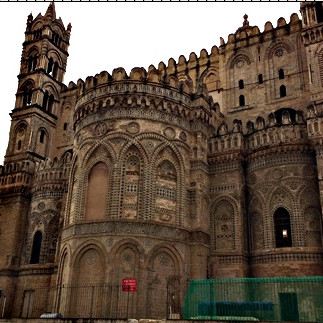







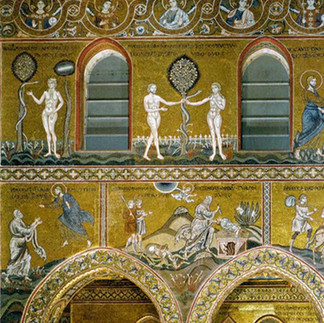





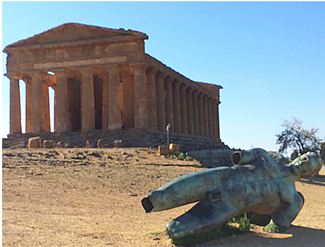







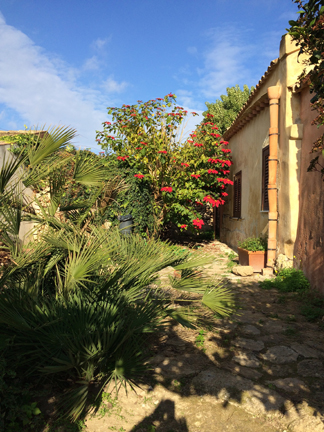










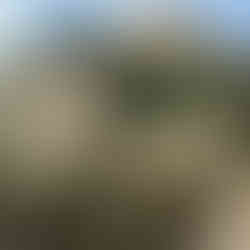




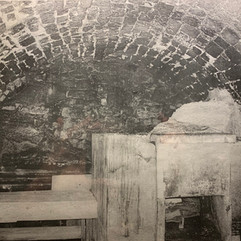









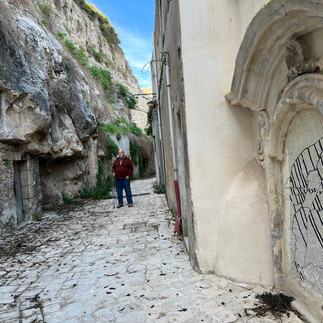


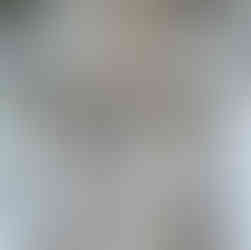










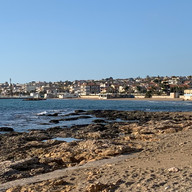






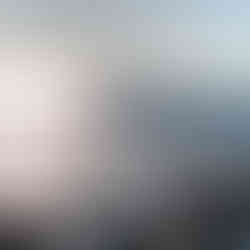






I love the pictures of your cave house and the nearby streets. Rob has long wanted to try living in one, so maybe we should try No. 65 that is 'Vendesi' no? The landscape seems likely to inspire both awe and nightmares!
Thanks Janet, for showing your exquisite new art, and for the delightful descriptions of life and beauty in Sicily. Safe travels!
Thanks for this beautiful armchair travel into a part of Italy I do not know. Sounds like quite an adventure!
How wonderful! If I ever get to Sicilia again, I shall take this guidebook with me. Nothing can beat a first-person account. May the new year bring you more trips, less rain, more orange blossoms and less steps, and more inspiration and less aggravation. May you continue to live and learn, to draw and paint new creations which enlighten our souls and brighten our vision. 🍊🍋🌞